|
Pila virens (Olivier, 1804)
|
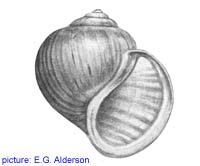 Pila virens. (picture not licenced under creative commons) |
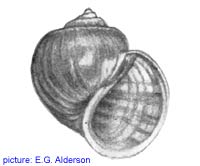 Pila virens. (picture not licenced under creative commons) |
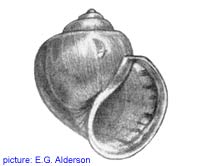 Pila virens. (picture not licenced under creative commons) |
Shell: Globose shell with a sharp
spire. Size: 40 to 65 mm shell height. Undeep sutures (angle 90 degree and more)
and medium sized umbilicus. The shell surface is smooth in most cases, although
more eroded forms are described as well.
The colour can vary from uniform yellow-olive to dark brown. Brown-reddish spiral
bands can be absent at the outside in some varaties, but they are nearly always
visible at the inside, near the shell opening (aperture).
Operculum: Corneous operculum, calcified at the inside in older snails.
Body: Dark brown to black body with a greay sole on the foot.
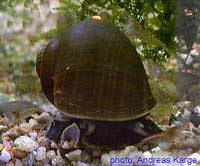 A Pila virens snail from Sri Lanka, summer 2001. Var. Layardi (Reeve) (picture not licenced under creative commons) |
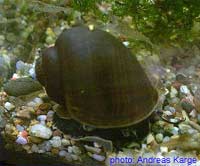 Same snail. Note that the top of the spire is missing in this snail. (picture not licenced under creative commons) |
 Pila virens. (picture not licenced under creative commons) |
Eggs: The eggs calcareous, white eggs are deposited above the waterline.
Food: Various water plants.
Behaviour: Pila virens is capable to survive prolongued drought
by aestivating in the dry mud. Periods of two year are recorded. During the
aestivation, teh metabolisms is switched to anaerobic. The produced lactic-acid
(a by-product of anaerobic metabolism) is neutralised with calcium from the
operculum.
Distribution: Pila virens can be found in the nearly the whole southern
of India (Bombay to Calcutta, Madras to Mangalore), Bangladesh and Sri Lanka.
Source of the photographs: http://www.wirbellose.de,
(c) Andreas Karge 2001
|
Except where otherwise noted, this page is licensed under a Creative Commons Attribution-NonCommercial-ShareAlike 2.5 License . http://www.applesnail.net |
|